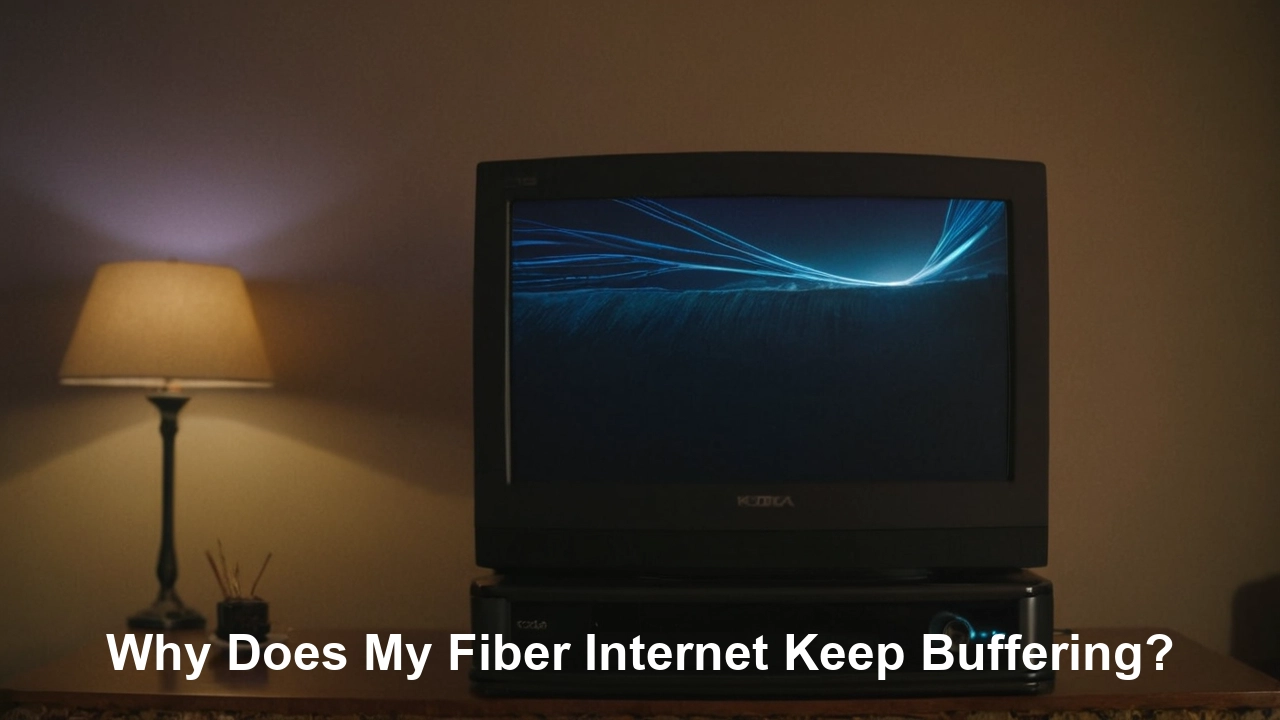Why does my fiber internet keep buffering?

These internet connections are some of the fastest and most reliable, courtesy of fiber optics. But indeed, there are instances that buffering issues can also happen to those availing of fiber AT&T Internet services. There are several potential causes for fiber internet buffering.
1. Excessive data traffic or the Network being very busy.
If many households in your neighborhood are using the internet intensively at the same time, it creates internet traffic, which may slow down the internet speed and increase buffering times. This is most common in the evenings when many people are streaming video to their gadgets, such as tablets and mobile phones. Usage could also be high if there is an online event such as a conference, software update, or introduction of a new internet service, which would increase traffic. The good news is that this type of buffering is often only done in the short term.
2. Connection Issues
This could be due to a faulty fiber optic connection, you may be getting a signal occasionally. For instance, weather may affect the fiber cables by causing harm or affecting the signals as they flow through the cables. Problems can also develop with equipment like modems, routers, connectors, or splitters. The best way I could help fix connectivity issues would be for a technician to physically check the external physical wires and your items that are in the home. Booting up and down equipment may also come in handy in some scenarios.
3. Wi-Fi Congestion or Interference
If, for instance, the Wi-Fi signal being used is being overpowered or there is interference within your home environment, then streaming over Wi-Fi will lead to buffering. If one has too many of them, has thick walls, and uses cordless phones and even microwave ovens, their Wi-Fi speed can be significantly affected. Perhaps, there’s a connectivity issue; consequently, you can attempt to move closer to the router or access point and check whether the problem remains. If not, you may use Wi-Fi extenders or mesh Wi-Fi systems to transmit a solid signal all around your home. Also, check for firmware updates to the routers or other access points that you have.
4. Computer Issues
Some of the issues that would lead to buffering include: a virus or malware on the computer, numerous background programs that hamper the stream’s smooth journey, old network drivers, complications with the DNS, or even hardware constraints that make your computer unable to handle the bandwidth from your fast fiber connection. Ensure that the computer updates are complete and run a malware scan, minimize the number of open programs, and review the streaming application system requirements to improve computer performance.
5. Individual Problems with Certain Websites or Services
Even if you get good scores on your baseline internet speed, there may be specific sites or even streaming site issues during certain periods. A few examples include regional blackouts, equipment malfunctions, traffic congestion, and server capabilities, which are all capable of influencing streaming quality. Visit web services like Downdetector to know whether more people are also experiencing problems, and switch to other streaming services to check whether it will work. The problems may be solved soon.
6. The settings that can usually be changed are the QoS or Firewall settings of a modem/router.
It may be due to some internet modem and router QoS settings or firewall policies that reduce bandwidth allowance for streaming video traffic. Find out if there are any configurations that you have made to allow for some devices or some type of traffic on the home network. Disabling bandwidth-limiting QoS rules may solve buffering, but turning this off might make the network crowded if many devices are downloading at the same time.
7. Fair Use Policies or Internet Service Provider (ISP) restrictions, such as bandwidth caps or reduced speed.
However, it is still possible to come across some AT&T Fiber Internet providers that are inclined to put some limitations on bandwidth or certain speed slowdown during the time of day when more users connect or when a lot of traffic is caused. Review your account details and determine if your plan has daily, weekly, or monthly limits on data usage. There could also be a provision that states that internet service providers have the right to reduce the speed, especially during peak hours. He might benefit from switching providers and getting an unlimited data fiber plan.
As a result, the fiber internet buffering is caused by Wi-Fi, computer, traffic, and connection problems. If making changes to your home network does not fix recurring streaming interruptions, then it is advised to get in touch with your internet service provider to seek help, as there may be a network, equipment, or account problem that can be fixed by your provider. It is often not typical to receive constant buffering on a fiber optic connection,n, given that the fiber optic can stream at very high speeds; therefore, it is advisable to contact customer support services if issues persist even after following the above-mentioned remedies.
Upgrade to faster, more reliable AT&T Fiber Internet today! Call us at +1 844-905-5002 and get connected with speeds that keep you ahead.





